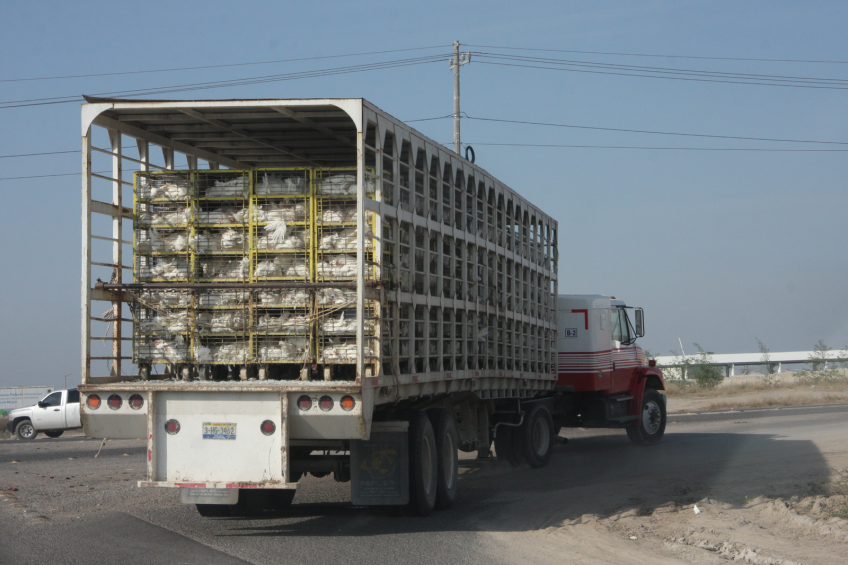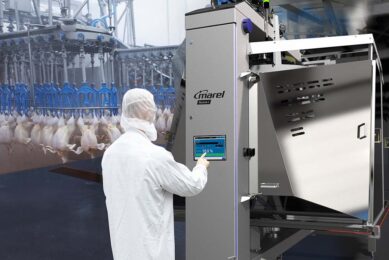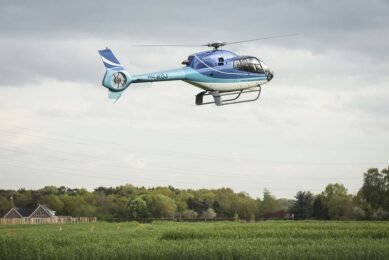Adequate welfare for good quality and yield

The various successive steps in poultry processing start from feed withdrawal at the farm to shipping of the end product. People and chickens are involved in this process. Obeying welfare of both is an important prerequisite to achieving the best possible quality and yield.
By Eduardo Cervantes Lopez, poultry processing consultant, Barranquilla, Colombia
In a poultry processing operation there are two groups of living creatures that deserve special attention: the birds and the people who work there. Regrettably there are companies who do not care to maintain the proper balance in this regard: the welfare.
There is a close relationship between the care with which the chickens should be handled in the stages of pre-slaughter and processing and reasonable comfort for the daily working environment of personnel. As a core concept, we can say that a happy worker gives the best of himself to handle the chickens, as demonstrated with the careful treatment they receive and their state of satisfaction during work on the farm and/or processing plant.
On farm conditions
The catching crew should have access to all tools which are needed to let them do their job under good conditions. These are:
- Clothing
- Gloves
- Boots
- Mouth cover
- Drinking water
- Table and chairs for lunch
- First aid kit
Drivers of trucks, taking chickens from the farm to the plant, are expected to provide good material. Cages should always be in good condition. This means that these should not be broken, without lids, poor fitting lids, etc. The height of the cage must be consistent with the weight of the chicken to be transported to the plant. Similarly, when modules or containers are used, they must also be in good condition, cleaned and disinfected.
The company must create a work environment where industrial integrity and safety are priorities. And their standards must be carried out, not as an obligation, but out of conviction, after having explained to all staff the importance of caring for their integrity to avoid accidents. These easily occur when there is an insecure condition with an Insecure Act.
Good plant layout
A comfortable facility with wide corridors, appropriate areas for eating meals, rest and recreation, etc., should be the first prerequisite for the chicken processing plant.
A good layout identifies the distribution of equipment used for handling, slaughtering and processing chickens. Also there, ergonomic working conditions must be present on each job. This starts with the best and most convenient way to make every operation being executed. This is a priority for the company. In addition, every day the staff should be able to do their work with the least possible physical wear.
This means compliance with industry safety standards for them to properly use all the elements they have received. These must be always clean and in good condition. All machines must have safety devices to protect them against accidents.
This also applies to the transport of processed or finished products and to let this happen comfortably and with a minimum risk of an accident.
Least effort
Ergonomics must be implemented during the handling of both chickens and cages during the harvesting operations. This applies to caging the birds and loading on – and unloading the cages from the trucks. The company must also encourage an environment to generate ideas to improve working methods. This must prevent the occurrence of health problems, such as the Carpal Tunnel Syndrome disease.
The goal should always be that workers with the least effort possible achieve the highest possible performance. If this objective is met, birds will arrive with less shock and trauma at the processing plant. Also the amount of “dead on arrival” (DOA) chickens will be minimal.
Bird welfare
The widespread use of the internet in the late twentieth century and the emergence of social networks in this century, nowadays allows us to know in real time what is happening in the world. These technological advantages enables to see both sides of the coin of the poultry business: positive and negative: deplorable behaviour of people.
The poultry world has not been immune to this situation. This is why the internet enables to watch videos of careful handling of the birds at different stages of the production process. Also there are videos clearly showing the cruelty of humans during the handling of chickens, causing all kinds of pain, shock and trauma.
As a result of this reality of aberrant behaviour, some companies in the broiler business have launched guidelines of caring for these fragile animals during handling. This led to a series of specific measures for the various stages. After all, when not carried out properly, these can have serious impact on the quality and yield of processed chickens.
Pre-slaughter measures
As we all know the proper handling of feed withdrawal, decreases the risk of birds to have insufficient feed or too long fasting. It is a given fact that over-feed withdrawal influences the quality and yield of processed chickens.
It is important however, to understand that there is no perfect fasting schedule, as all birds do not always eat at the same time, as every 4 hours they feel the need to eat. Therefore, the chance of over fasting is always present. Hence, the challenge for those who programme feed withdrawal is to reduce the risk that over fasting occurs. If not managed properly, the following consequences may occur:
Long feed withdrawal
Birds are suffering from over-fasting and dehydrate. Consequently, by reducing the amount of water in the tissues, the body of the bird provides a higher resistance to current flow. As a result the effectiveness of electric stunning will be less.
Secondly the muscle glycogen is reduced, increasing the final pH of the processed meat.
Stress conditions
In warm weather the metabolism alters rapidly, transforming glycogen to lactic acid. This brings the final pH level is reached before the carcasses chill. Moreover, this leads to the Pale, Soft and Exudative (PSE) meat syndrome.
In terms of quality, the meat will have a pale colour, crumbles easily when cooked and loses its ability to retain water when leaving the chiller due to denaturation of protein. Thus, yield losses will be the result.
In cold climates however, the altered metabolism favours the Dark, Firm and Dry (DFD ) meat syndrome, resulting in dark coloured meat. The texture is dry and rigid.
Capture and transport
To reduce the abuse of birds, definitely the best capturing method is to take them from the body keeping the wings attached to the body. If the birds are too much crowded, the air sacs located in the abdominal region will be compressed, affecting the ability to breathe normally and evaporate to dissipate heat.
Drinking lines without leaking devices will cause water spillage and will wet the litter. This condition favours the appearance of the Pododermatitis problem. Depending on its severity this may affect many legs, affecting the final yield of the crop.
Transport time should be a short as possible. When this condition cannot be met, it is important to remember that prolonged affect the quality and yield of processed chicken, for the reasons below.
As chickens are usually thrown into the cages, lesions in the breast increase. And due to the position of the birds in the cages, blood will be captured in the thighs. During bleeding, this will not fully be removed and will lead to reduction of the hepatic glycogen. The serum is decreased glycogen ???? Finally, slow start of Rigor Mortis will appear.
Waiting at the plant
In hot weather it is recommended after weighing trucks arriving from the farms, to wet the live chickens for:
- Reducing the level of bacterial contamination, due to faeces in their feathers and skin. Often this is coming from chickens in the upper cages, and is falling into those at the lower levels.
- Refreshing the birds to reduce heat stress
- Delaying the operation in order to avoid Pale, Soft and Exudative (PSE) meat, which affects water retention gained during chilling.
- On arrival at the processed plant, the birds should wait in darkness and silence. If these two conditions are not met, they are in a permanent state of alertness, thus causing stress.
- The average waiting time recommended is 2 hours.
Hanging on overhead conveyor
One of the most critical operations is to hang the birds in the shackles. If not handled correctly from the time when the cages are removed to locate the shackles, they will suffer from various kinds of abuse. For this reason, the chickens must be taken by the legs and hold them close to the joint with the thigh, using heart of the fingers and thumb.
An important aspect of this careful practice is, that workers feel comfortable with respect to ergonomics. Details like shackle height and distance to reach it, are crucial in order to not cause harm to the chickens.
Another important aspect to consider is the type of shackle and their dimensions, which must correspond to the weight of the chickens to be processed. If this condition is not met the legs and thighs of the bird are mistreated and will be causing pain.
[Source: World Poultry magazine Vol 30 nr 5, 2014]
Join 31,000+ subscribers
Subscribe to our newsletter to stay updated about all the need-to-know content in the poultry sector, three times a week. Beheer
Beheer








 WP Admin
WP Admin  Bewerk bericht
Bewerk bericht